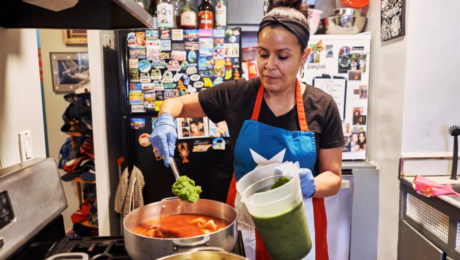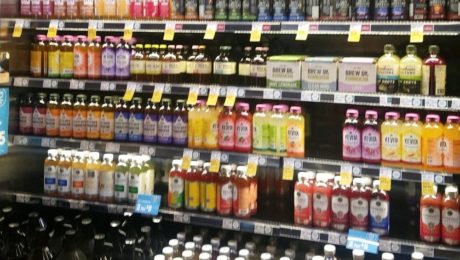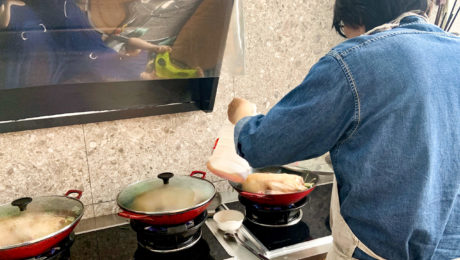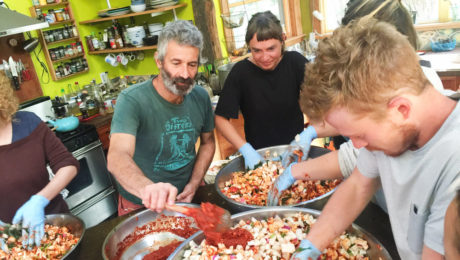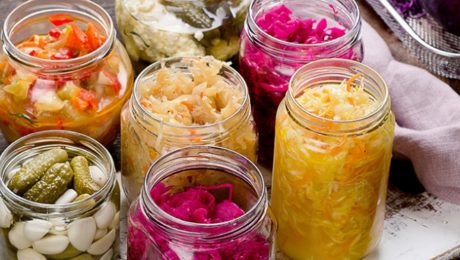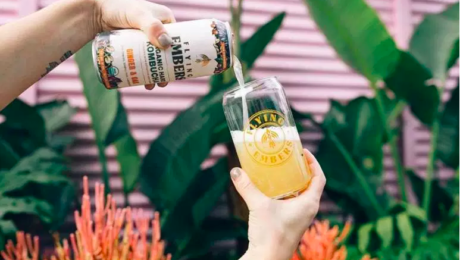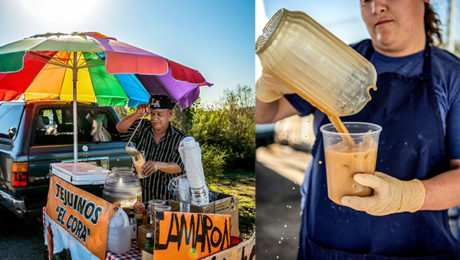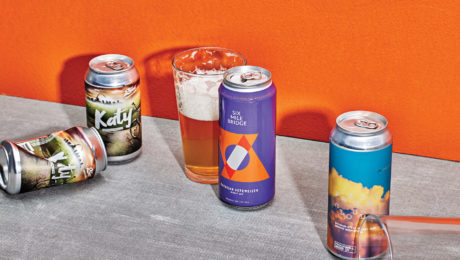Regulating Home Chefs
The loosely-regulated cottage food industry is growing, as home chefs find it easier than ever to sell handmade meals via online services like WoodSpoon and Shef. These companies are part of the gig economy and trust that chefs will apply for the proper state and local permits to sell food made in a home kitchen. But these apps do not police regulatory compliance, noting only 20-30% of their chefs are licensed.
“In recent months, states have loosened restrictions to make it easier for home cooks to sell products online, but the result is a patchwork of state and local rules, regulations and permit requirements,” reads an article in The New York Times. “Some states allow home cooks to sell only baked goods like bread, cookies or jellies. Others put caps on the amount of money home cooks can make. And other states require the use of licensed facilities, such as commercial kitchens.”
Adds Oren Saar, founder and the chief executive of WoodSpoon: “We are ahead of the regulators, but as long as I keep my customers safe and everything is healthy, there are no issues. We believe our home kitchens are safer than any restaurants.”
As the pandemic ebbs and Americans feel cooking burnout, companies are investing tens of billions into the changing food industry. Alt protein, fast food, food delivery, functional snacks and alt food are all facets of a food industry growing and changing post-pandemic. The New York Times says they’re all making “bets on what, where and how consumers will eat in the coming years.”
Read more (The New York Times)
- Published in Business, Food & Flavor
Fermented Dairy Improves Memory
A new study found fermented dairy products reduce memory loss. The study, published in Nutritional Neurosciences, confirms there is a connection between the gut microbiome and the nervous system, known as the gut-brain axis
The adults in the test regularly consumed a dairy-based fermented drink, containing 25-30 billion colony forming units (CFUs). Drinking fermented dairy — like yogurt, kefir or fermented whey — “increased the presence of certain microorganisms in the gut and improved relational memory in healthy adults.”
Read more (Nutritional Neurosciences)
Could Outdated Law Force Fermented Drinks Off Shelves?
A decades-old South Carolina law is threatening kombucha and non-alcoholic beverage producers who sell their fermented drinks in the state.
The current statute dictates that a permit is needed to sell beer and other fermented beverages. But the law lists no minimum ABV, forcing kombucha brewers and non-alcoholic beer producers to follow the same permitting regulations as alcoholic brands.
Though the statute is loosely enforced, it came to a head recently (pun intended). Non-alcohol beer company Athletic Brewing Co. announced it would no longer sell their products in South Carolina due to ““the recent legal interpretation by state officials on the unique definition of non-alcoholic beer.” The state’s Department of Revenue began investigating Athletic Brewing Co. after receiving a complaint about the brewer.
“This is definitely going to create a lot of uncertainty for a lot of different types of businesses and, you know, ultimately, the question is, ‘Are we going to apply the alcohol rules to companies who don’t necessarily, you know, the alcohol is so minimal?’” said Brook Bristow, an attorney at Bristow Beverage Law, who served as Executive Director of the state’s Brewers Guild for seven years.
Brewers that want to comply with the current law have to apply for an expensive license. SouthCarolina’s General Assembly currently has no bills under discussion that would modify the regulations.
Read more (The Free Times)
- Published in Business
China’s Secret Sauce
NPR highlights “Lu, the secret sauce at the heart of many Chinese family cuisines.” Every Chinese region uses a variation of Lu in their cuisine. It is made from a base of salty liquid (like soy sauce) mixed with sugar and spices. But salt is core to the product, more so than the spices.
Lu takes on “the characteristics of each of China’s regional cuisines.” In Sichuan, Lu is spicy; in Zao, it is alcoholic, made from the fermented rice left over from brewing Chinese yellow wine.
One Chinese restaurant chef (pictured, who asked NPR to keep him anonymous so his restaurant stays out of the limelight) traces his Lu sauce to “an unbroken chain of sauces dating back to that first batch his mother made in the 1980s.” The chef takes his sauce at the end of each day and gives it “nutrients” – fresh spices and meat boiled in Lu.
“It is a bit like sourdough, where the last batch seeds the next batch, and the flavor intensifies over the years,” the piece continues.
Read more (NPR)
- Published in Food & Flavor
Sandor Katz: “Don’t be Intimidated by Fermentation”
Further catapulting fermentation into the culinary zeitgeist: Sandor Katz was a guest on the Rachael Ray Show, talking about fermentation and sharing a homemade sauerkraut recipe.
“Everybody eats and drinks products of fermentation everyday,” Katz said on the show’s March 8 episode. “Fermentation, which is the transformation action of microorganisms, is so integral to how we make effective use of whatever food resources are available to us.”
Katz, author of six books on fermentation, stressed “bread is fermented, cheese is fermented, cured meats are fermented, condiments are either directly fermented or they rely on vinegar, which is a direct product of fermentation.”
Katz demonstrated how to make a sauerkraut for viewers, encouraging them: “Don’t be intimidated by fermentation.”
Read more (Rachael Ray Show)
- Published in Food & Flavor
Survey: Fermented Foods and Consumer Behavior
A new study aims to profile consumer habits with fermented foods and beverages. Researchers want to know the types of fermented products that are most popular — and why. To TFA’s knowledge, this is the first major study probing consumer perceptions of fermented foods.
“With this survey we hope to gain a better understanding of the types of fermented foods people are consuming and what motivates them to incorporate fermented foods into their diet,” says Erin DiCaprio, PhD, a food safety expert and extension specialist at UC Davis. “We also want to gather data on the trends related to in-home fermentation and the sources of information the public turns to related to fermented foods. The data we collect will help inform future areas of focus for research and education on fermented foods.”
The study is conducted by the EATLAC project at the University of California, Davis, Department of Food Science and Technology. EATLAC (Evaluating And Testing Lacto-ferments Across the Country), funded by California’s agricultural department, aims to provide accurate information and resources to the public. EATLAC’s directors are DiCaprio and Maria Marco, PhD, microbiologist and professor in the department of food science and technology at the university (and member of TFA’s Advisory Board).
To participate in the 10-minute anonymous survey, follow the link: https://ucdavis.co1.qualtrics.com/jfe/form/SV_0CzKfHUWgX2HHVj
- Published in Food & Flavor, Science
Do Alt Protein Brands Tarnish Food Shows?
Does allowing alternative protein or bio-tech brands into Natural Products Expo West distort the natural foods industry? An article in Forbes argues that the show producers’ decision to allow lab-created, animal-free products into this year’s event is “troubling,” “confusing” and “harmful.”
Expo West has long been the “it” show for established and startup companies in the natural and organic products industry. Forbes says allowing an alternative dairy brand to exhibit next to a legitimate plant-based product that uses organic ingredients is hurting higher-quality brands, “especially when biotech brands are claiming to be superior to plant-based, even as they attempt to co-opt plant-based messaging, as some do.”
Read more (Forbes)
- Published in Business
Consumer Sues Hard Kombucha Brand
Fermented Sciences, maker of Flying Embers hard kombucha, is asking a judge to dismiss a class action lawsuit against the brand. The suit alleges the health benefits of Fermented Sciences’ kombucha and seltzers are misleading.
The complaint says it’s confusing the label lists “vitamin C,” “antioxidants,” “real botanicals” and “live probiotics” because the drink is alcoholic and the USDA Dietary Guidelines advise that “alcoholic beverages are not a component of the USDA Dietary Patterns.” Consumers, plaintiff Katie Kuciver says, may believe Flying Embers’ positive ingredients outweigh the negative effects of drinking alcohol.
In the 17-page response memorandum, Fermented Sciences argues the plaintiff’s complaints are “bald assertions” and the consumer’s belief that the implied health benefits on the hard kombucha label could counteract alcohol are “implausible.” The Flying Embers label, Fermented Sciences points out, includes a surgeon general’s warning about the adverse health issues of drinking alcohol.
“Reasonable consumers would understand that the products are alcoholic beverages that may cause health problems, but that defendant’s products also include juices with antioxidants as well as probiotics. There is no deception,” Fermented Sciences writes in their response.
Read more (Law360)
- Published in Business
Mexico’s Fermented Drinks
“Most people outside Mexico are familiar with the country’s tradition of distillates and beers. Far fewer have experienced an entire galaxy of beverages, like tejuino , that are much less available here in Southern California. They are made with Indigenous-based practices, typically inside people’s homes, usually with a plant, like corn, that’s already used for a bunch of other things in Mexico.”
A Los Angeles Times article highlights Mexican fermented drinks, like tepache, tejuino and pulque. They’re common in Mexico, brewed in home kitchens and sold at roadside stands. But in L.A. County where almost 4 million people trace their roots to Mexico, these rustic fermented beverages remain uncommercialized. Are Mexico’s artisanal, fermented drinks the last “importation of Mexican culinary practices to the United States?” the article speculates.
Tepache is the closest to breakthrough status in the U.S., with more companies offering canned versions. De La Calle Tepache was started by co-founder Rafael Martin using his grandmother’s recipe (he later studied fermentation in college). Ingredients in De La Calle Tepache are traditional to and sourced from Mexico. Martin describes his clientele as “chipsters” crowd – a slang term for Chicano hipsters.
Pulque, on the other hand, is difficult to replicate. The fermented aquamiel sap (from the core of the agave plant) only lasts two days before it starts to go bad. Some academics argue ferments from Mexico should be “more aggressively cataloged, preserved and consumed.” Scientists from the University of Arizona and four universities in Mexico recently published their research highlighting 16 of Mexico’s fermented beverages.
Read more (Los Angeles Times)
- Published in Food & Flavor
Experimenting with Yeast
The craft brewery industry is seeing increased innovation — and beer drinkers eagerly embrace these novel experiments. Brewers are turning to new, unique yeast profiles for distinctive drink styles.
“Whether a brewer chooses to ferment hot and quick or slow and cold is in large part a direct response to what microorganisms – i.e., yeasts – they select to turn their sugar water (aka wort, in beer-speak) into beer; and depending on the temperature and amount of yeast used, the same yeast profile can yield different flavors. Will a yeast profile influence the drinker’s experience?” reads an article in Sauce magazine. “The past several years have seen substantial innovation in the fermentation process leading to greater efficiency and efficacy.”
Yeast isolates used more and more by craft brewers include the lager-style Lutra kveik (kveik being the word for yeast in Norwegian). Kveik strains produce fruity, tropical-tasting beers. Another yeast rising in popularity among brewers is Sourvisiae, which produces a more sour flavor.
Read more (Sauce)
- Published in Food & Flavor

